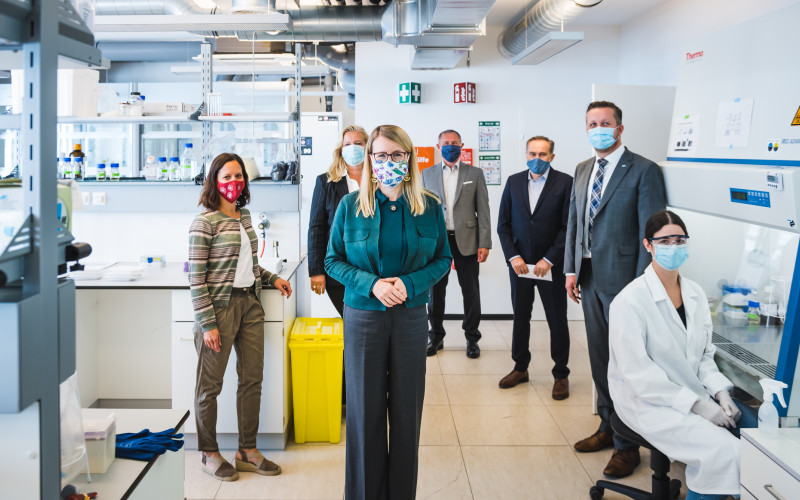The food industry has very high hygiene and safety standards. This also applies to the packaging, which must neither affect the taste or visual appearance of the product nor contain substances that are harmful to health. In order to guarantee that the food contact material is safe, extensive chemical analyses are used.
Packaging analysis: A new approach at FH Campus Wien
Researchers from the sections Packaging and Resource Management and Biotechnology at FH Campus Wien have found a new approach to packaging analysis with the project MIGRATOX at the Vienna BioCenter. This COIN (Cooperation & Innovation) development project, funded by the FFG for a period of five years, aims to increase the safety of food packaging. Project Manager Silvia Apprich explains: "When examining food contact materials, particular attention must be paid to substances that are not intentionally introduced, and DNA-reactive substances must also be excluded." With MIGRATOX, conventional chemical analysis has been supplemented with so-called bioassays, i.e. with standardized tests based on bacterial cells. If this test procedure shows no effect, the packaging is safe. If the result is positive, the researchers use additional chemical analysis methods to identify the substance responsible for the effect.
Great benefit with a lasting effect
"With the MIGRATOX research project, we are taking packaging safety to a new level thanks to close cooperation with well-known international partners from the food and packaging industry, and all this will also benefit the consumers," said Wilhelm Behensky, Chief Executive Officer of FH Campus Wien. There is great interest in the MIGRATOX project, with approximately 30 partners from the industry, including major players from Austria and international branded companies, trusting in the test method. The Austrian packaging industry is very successful internationally and is the market leader in many areas. In addition, with MIGRATOX, the Section Packaging and Resource Management of FH Campus Wien has succeeded in standardizing and establishing recommendations for the industry, creating an international industrial standard and initiating further research projects. They also concern the use of recycling materials and help close packaging cycles.
Research with application-oriented know-how
The Federal Minister for Digital and Economic Affairs, Margarete Schramböck, who visited the Vienna BioCenter as a model research facility, was also impressed by MIGRATOX. She sees great potential in the cooperation with universities of applied sciences, which is why she and the Austrian Research Promotion Agency (FFG) have launched the funding program "University of Applied Sciences - Research for Business". "With the support of the universities of applied sciences, the SMEs are specifically strengthened and can develop innovative products and new technologies on the basis of research at the educational institutions," emphasized the Minister during her visit.
You might also be interested in
Degree programs in the section Packaging and Resource Management:
Bachelor‘s degree program Packaging Technology
Bachelor’s degree program Sustainable Management of Resources
Master’s degree program Packaging Technology and Sustainability
